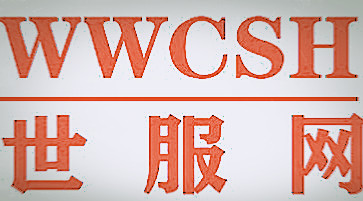Brief Analysis Of Post Employment Situation In Bole Textile And Garment Enterprises
Bo Zhou started production of 29 textile and garment enterprises after the Spring Festival in 2019. As of now, the number of stable workers in the whole industry is 3500. After the commencement of normal operation of the enterprises, the current number of general practitioners basically meets the needs of enterprises.
There are mainly problems in the employment of textile and garment enterprises. First, the labor force of local labor is unstable and the mobility is large. The labor force pferred from southern Xinjiang is restricted by cultural level and language exchange, which increases the difficulty and cycle of training and affects labor efficiency to a certain extent.
Two, textile and garment enterprises have become more urgent for skilled talents, especially middle and advanced skilled talents. There is a large gap between skilled and skilled positions, and the structural contradictions which are not suitable for local labor quality and job demands are increasingly prominent.
Countermeasures and suggestions: first, we should strengthen vocational and technical training, carry out pre job employment training according to the different jobs and requirements of different jobs in the state's soon to be put into production enterprises, and constantly improve the quality of labor skills.
Two, we should strengthen the construction of basic public facilities in various parks, guide enterprises to improve their living and production environment, strengthen labor protection, and attract more talents to serve enterprises and retain talents.
Three, it is suggested to establish a long-term mechanism for labor pfer and employment in North and South China from the perspective of the autonomous region.
The first is to establish the working mechanism of the dynamic link between various departments and the input land, the output land and the input place, and to track services and co management. The two is to establish a long-term mechanism for the retention and reversion of the labor force in the northern Xinjiang of the southern Xinjiang.
Three, we should consider the training, pfer, settlement, employment, schooling, medical treatment, housing and other aspects, and introduce a long-term mechanism for the pfer of labor force from the poverty-stricken families in the southern part of Xinjiang to the northern Xinjiang.
- Related reading

Would You Rather Send Express Delivery Than Enter The Factory? Representatives Of The Two Sessions Discussed How To Make Textile Skilled Talents More Promising.
|
The Minimum Wage Standards In Shanghai, Tianjin, Shenzhen And Beijing Exceeded 2000 Yuan / Month.
|- Professional market | The Era Of Online Shopping In The Whole Age Tested The Peak Of E-Commerce Express Online Shopping As "Touchstone"
- Company news | 雅戈尔李如成咬定做大服装主业
- Logistics skills | New Year'S Company Will Join Hands To Raise Prices: Datsiga 1 Yuan.
- Management strategy | Clothing Sellers Have To Know The Survival Tool.
- Daily headlines | European People Tighten Their Belts. China'S Santa Claus Seeks Sale Online.
- Local industry | 烟台11月服装比去年涨价6.9% 儿童类服装涨幅最大
- market research | Uncover The Secret Of Clothing Discount: Raise The Original Price Or Find Someone To Do The Imitation.
- Industry stock market | 今年A股跌幅 已创历史第三惨
- Latest topics | Radiation Proof Clothing Is Still Selling Well In Hong Kong, &Nbsp.
- Innovative marketing | How To Popularize A New Shop Without Money And Potential?
- In The Second Half Of The Electricity Supplier, How To Tap The Gold Dollar?
- New Pattern And New Kinetic Energy -- 2019 China'S Textile And Apparel Trade Situation
- Before The Two Digit Decline In Export Volume In February, Will China'S Textile Industry Face More Challenges This Year?
- 2019 Nominations For The National Science And Technology Awards Announced 15 Textile Related Projects
- The 3 Days Of The Embroidery Of Non Heritage Dong Embroidery Are Nearly Thousand Single.
- Some People Are Happy And Worried. In March, Polyester Industry Chain Upstream And Downstream "Treatment" Too Much.
- Tian Jia Yi Explosion Hit The Heart Of Printing And Dyeing Industry, A Shares Affected Geometry.
- Planning 100 Billion Textile And Garment Industry Cluster, China Textile Association Research Group To Inspect Haining
- Levi 'S Cowboy IPO Rose 31.8% On The First Day.
- Nike Air Max 97 SH Kaleidoscope Will Be On Sale Soon!

